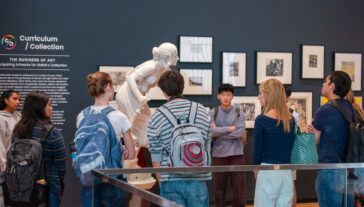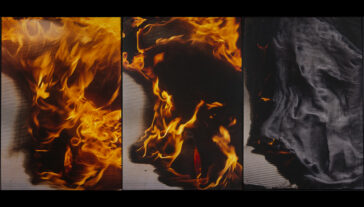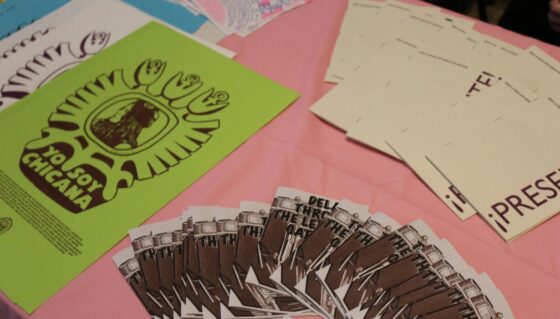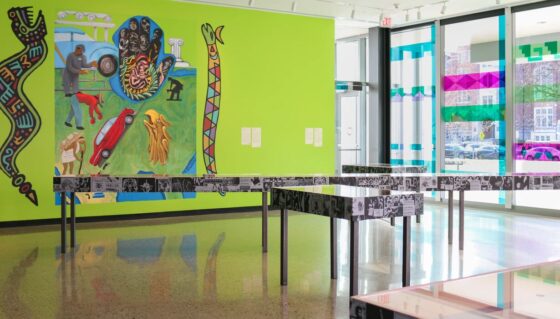New Zines Available at UMMA Showcase ‘History Spoken in the Voice of Today’s Generation’
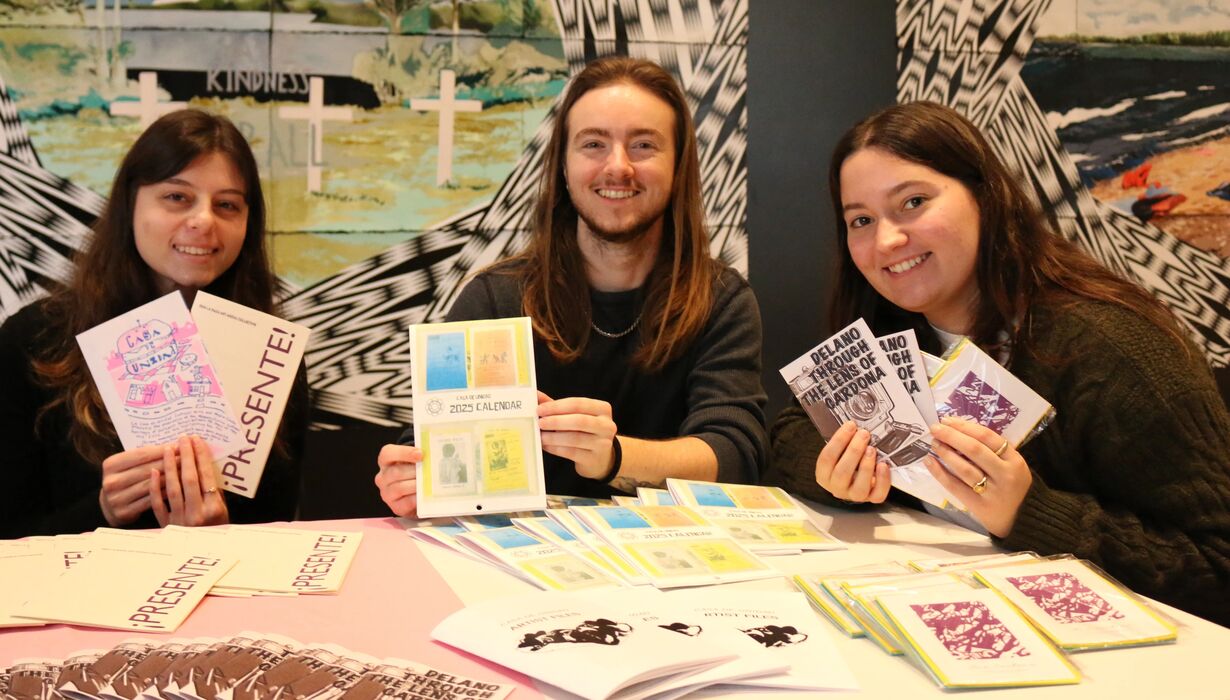
For Nicole Marroquin, an artist featured in the UMMA exhibition La Raza Art and Media Collective 1975–Today, all it takes to spark meaningful conversations about history, identity and activism is a simple handmade booklet. So, as a professor at the Stamps School of Art & Design, she designed a zine-making course to help students explore history through hands-on creativity and storytelling.
The course was inspired by the La Raza exhibition, which celebrates the legacy of the La Raza Art and Media Collective (RAMC), a University of Michigan student organization (1974–1977), aimed to create an inclusive platform for “Raza art,” amplifying Chicano and Latino voices through cultural events, exhibits, and a journal of essays, poetry, and art. For this special zine making course, Marroquin encouraged her students to dive into this history by exploring RAMC’s works and collaborating with the Bentley Historical Library archives. She saw zines as a perfect way for students to engage with the past while creating something new and personal.
Marroquin says her teaching emphasizes practical, hands-on skills like photocopying, collaging, and self-publishing, empowering students to adopt a DIY ethos and create their own platforms for expression. Collaboration was also key, she said, as students combined their strengths to produce collective zines that amplified diverse voices and ideas. According to Marroquin, this focus on collaborative teamwork helped them discover their unique contributions while learning from one another in a supportive, creative environment.
One cohort of students found particular inspiration in Ana Cardona, a key figure in the Chicano movement as well as a poet and photographer. Inspired by her work, the students organized a collection of her poems into a small-format zine. During a virtual meeting with Cardona, she recited a poem live, which the students transcribed and included in their project.
“That packet of poems in the little clear envelope—it couldn’t have been done by anyone else or anywhere else,” Marroquin said. “It really is a good work of art. For each of the zines created I could tell you a story that reflects an authentic experience and an impact.”
The 11 finished zines created by the class cohorts are now part of the exhibition La Raza Art and Media Collective 1975 – Today at UMMA. Including the zines in the exhibition highlights the students’ contributions to ongoing conversations about Chicano history, activism, and art, showing how their work resonates beyond the classroom. Visitors to the exhibition are encouraged to take copies of the zines home with them, helping keep the legacy of the stories told inside alive.
This semester, students will present their zines at UMMA’s Zine Fest on March 28 and Ypsi Zine Jamboree on March 29. “That’s the power of this kind of organizing,” Marroquin said. “You create a media landscape for authentic conversations and then let it go, not knowing where it will travel.”
Ultimately, Marroquin sees zines as tools of empowerment. She encourages students to use their art to amplify underrepresented voices and spark change. “What needs to happen,” she said, “is for this history to be spoken in the voice of today’s generation. We need young people to find what sparks their interest and carry it forward, because this history needs legs—it needs to move forward.”
That packet of poems in the little clear envelope—it couldn’t have been done by anyone else or anywhere else, it really is a good work of art. For each of the zines created I could tell you a story that reflects an authentic experience and an impact.
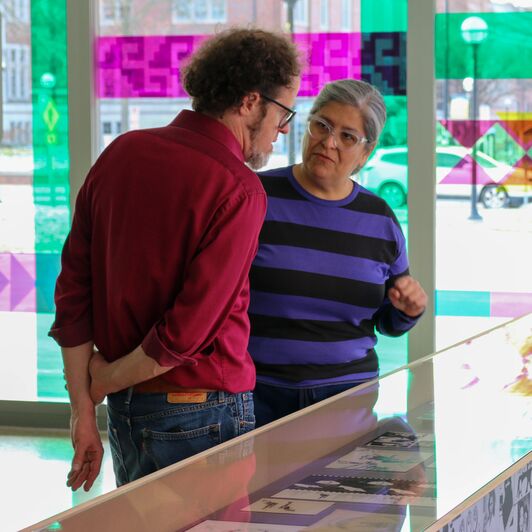
U-M Students Presenting Zines On Opening Day of La Raza Exhibition
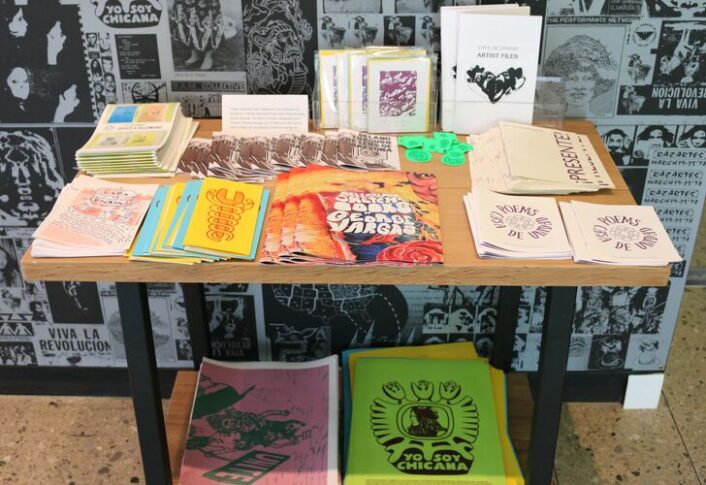
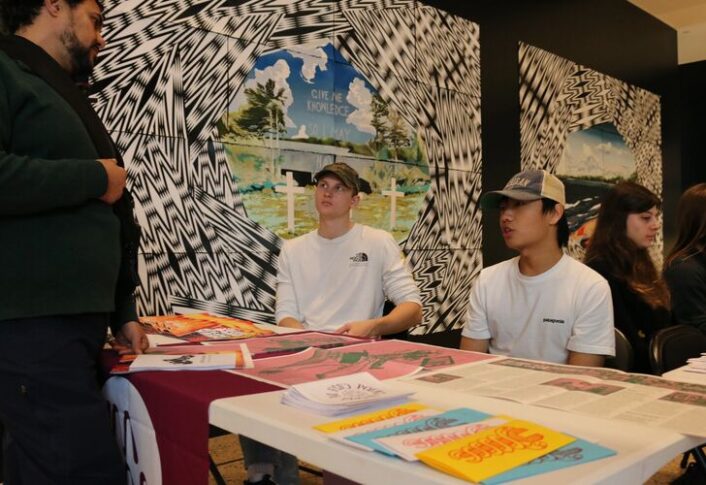
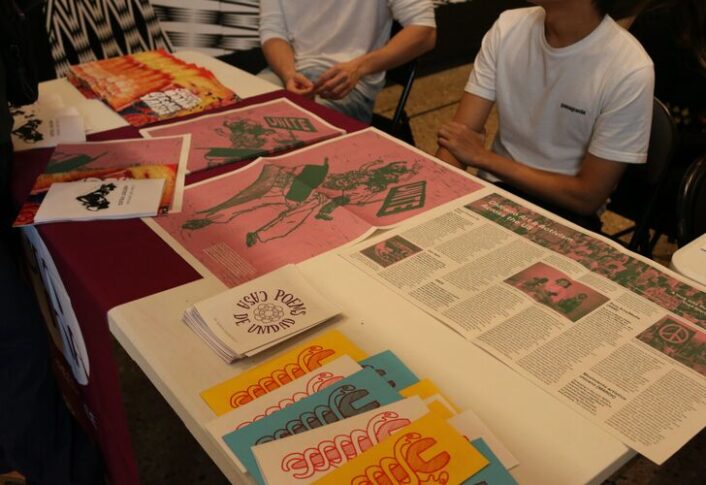
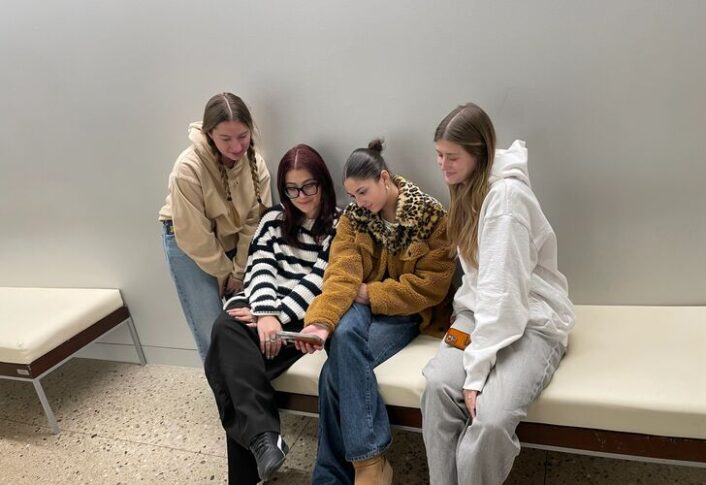
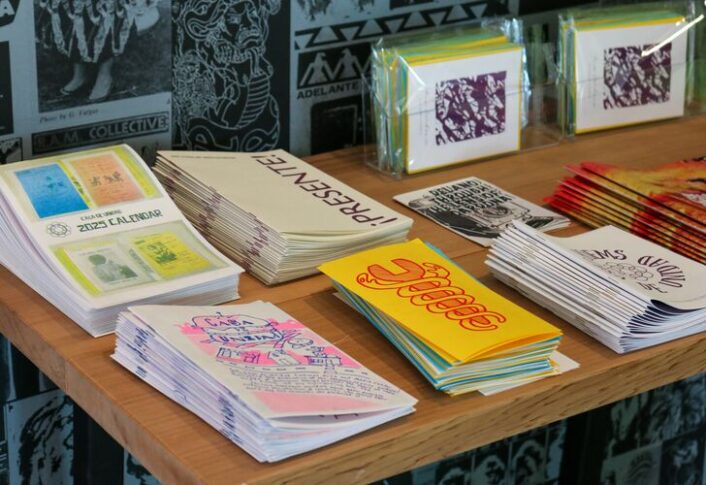
More From UMMA

